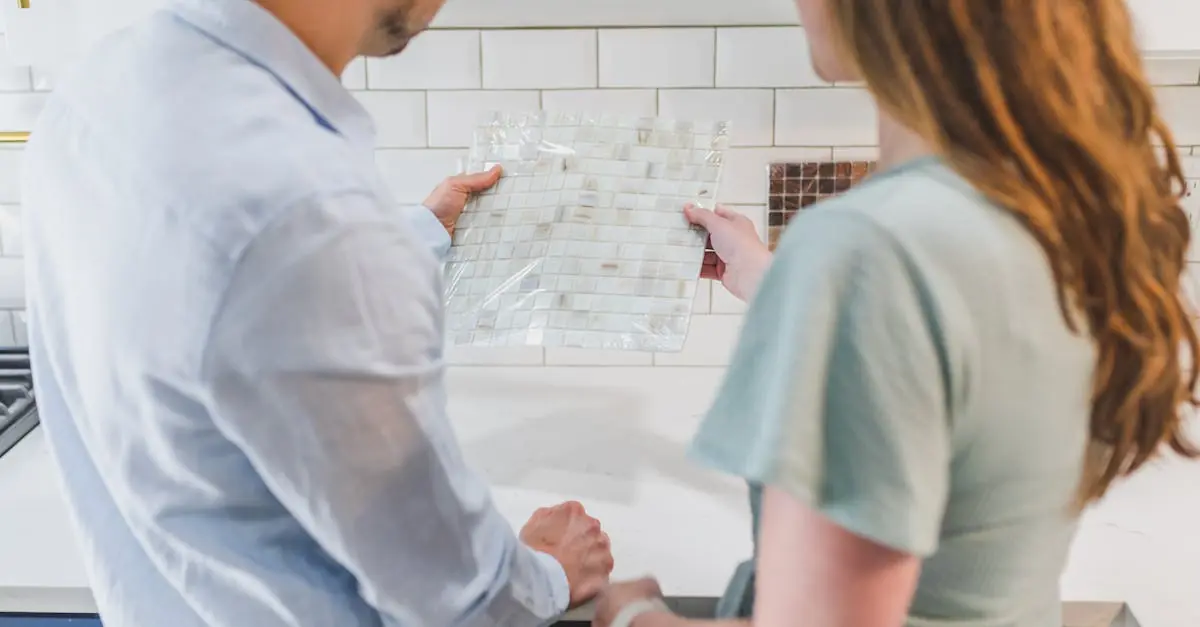Thinking of giving that tired kitchen a facelift? A DIY kitchen remodel can be the perfect solution to transform your space without breaking the bank. But before you grab your hammer and paintbrush, it’s crucial to understand the costs involved. After all, no one wants to turn their culinary kingdom into a money pit.
From cabinets to countertops, the expenses can add up faster than a pot of water boiling over. But fear not! With a little planning and creativity, you can achieve the kitchen of your dreams without sacrificing your wallet. Let’s dive into the nitty-gritty of DIY kitchen remodel costs and discover how to whip up a stunning space that’ll have your friends wondering if you hired a professional.
Table of Contents
ToggleUnderstanding DIY Kitchen Remodel Cost
Understanding DIY kitchen remodel costs involves considering multiple factors that influence the final price. Proper planning helps to avoid unexpected expenses and allows for budget-friendly choices.
Factors Affecting Cost
Location plays a crucial role when assessing remodel costs. Labor rates fluctuate significantly between urban and rural areas. Material quality also impacts pricing, with higher-end materials driving up the budget. Size affects expenses; larger kitchens require more materials and time. Design complexity presents another challenge; intricate layouts may require additional labor. Lastly, unexpected issues arise, such as plumbing or electrical repairs, adding to total costs.
Average Cost Breakdown
On average, DIY kitchen remodels range from $10,000 to $30,000. Cabinets consume the largest portion, usually accounting for about 30% to 40% of the overall budget. Countertops follow closely, comprising around 15% to 20% of costs. Flooring typically represents 10% to 15%, while appliances can take up another 10% to 15%. Labor, if outsourced, might add an extra 20% to 30%, while unexpected costs could add 10% to the total. Recognizing these averages aids in better financial planning.
Planning Your DIY Kitchen Remodel
Planning a DIY kitchen remodel requires careful consideration of costs and resources. A strategic approach prevents overspending while achieving desired results.
Setting a Budget
Determining a budget stands as a critical first step. Allocate funds based on average DIY kitchen remodel costs, which vary from $10,000 to $30,000. Prioritize specific areas such as cabinets, which take up 30% to 40% of expenses. Follow this with countertops and appliances, accounting for 15% to 20% and 10% to 15% of the budget, respectively. Factor in flooring costs of about 10% to 15%. Set aside an additional 10% for unexpected issues, such as plumbing or electrical repairs. By outlining these expenses clearly, individuals can establish a realistic budget that accommodates both planned and unforeseen costs.
Essential Tools and Materials
Gathering essential tools and materials remains vital for a successful remodel. A few key tools include a drill, tape measure, level, and saw. Investing in quality materials guarantees longevity and aesthetics. Opt for durable cabinetry materials, appealing countertops, and resilient flooring. Consider sourcing cabinets and countertops from reputable local stores or online retailers. Allocate funds for safety equipment, such as gloves and goggles, to protect during the process. Collecting these tools and materials efficiently streamlines the remodeling job, enhancing the overall DIY experience.
Cost-Saving Tips for Your Remodel
Planning a DIY kitchen remodel involves strategic choices to save money without sacrificing quality. He or she should prioritize budget-friendly upgrades and know when to splurge.
Budget-Friendly Upgrades
Updating hardware on cabinets often makes a significant impact. New knobs and pulls cost less yet transform the kitchen’s look. Consider painting cabinets instead of replacing them. A fresh coat can rejuvenate the space at a fraction of the cost. Selecting affordable materials, such as laminate countertops, can provide a high-end appearance without the hefty price tag. Installing a new backsplash using peel-and-stick options can also enhance aesthetic appeal. DIY light fixtures can brighten the kitchen while minimizing expenses. Engaging in these budget-friendly upgrades creates a stylish kitchen without exceeding the budget.
Where to Splurge
When planning the remodel, some areas warrant extra investment. Quality cabinets often contribute to both visual appeal and long-term functionality. Investing about 30% to 40% of the budget in durable cabinetry pays off in both aesthetics and performance. High-quality countertops, although pricier, enhance the kitchen’s overall look and usability; allocating 15% to 20% offers a solid return. Appliances also require careful consideration. Spending 10% to 15% on reliable, energy-efficient models leads to savings on utility bills over time. Choosing to splurge wisely ensures the kitchen remodel delivers both beauty and practicality.
Evaluating the Value of Your Remodel
Evaluating the value of a DIY kitchen remodel requires careful consideration of various factors. Budget highlights include cabinets, which typically account for 30% to 40% of total costs. Prioritizing high-quality cabinets enhances both style and functionality, offering a return on investment.
Countertops also play a significant role, making up 15% to 20% of the remodel budget. Choosing durable and visually appealing materials can elevate the kitchen’s overall look. Flooring costs, ranging from 10% to 15%, warrant attention as well, since quality flooring can improve longevity and ease of maintenance.
Appliances form another crucial component, typically consuming 10% to 15% of the budget. Investing in energy-efficient options not only reduces utility bills but adds considerable value to the space. Unforeseen issues, such as plumbing or electrical repairs, may arise, so allocating an additional 10% for contingencies is advisable.
Exploring cost-saving tips can yield financial benefits while maintaining quality. Simple upgrades, like modernizing cabinet hardware or repainting existing cabinets, can provide a fresh look without significant expenses. Affordable material alternatives, such as laminate countertops or peel-and-stick backsplashes, also enhance aesthetics without a hefty price tag.
Guiding the decision-making process involves identifying where to splurge. Focusing on quality cabinets and high-quality countertops can lead to remarkable improvements. Deciding on reliable, energy-efficient appliances maximizes both functionality and kitchen appeal.
Tracking expenses during the process allows for better budget management. Understanding the breakdown of costs enables more informed choices, ensuring that the remodel meets personal preferences and financial constraints. By evaluating these factors, one can achieve a beautiful and functional kitchen remodel within budget.
A DIY kitchen remodel can be a rewarding and budget-friendly venture. By understanding the costs involved and planning carefully, anyone can transform their kitchen into a stylish and functional space. Prioritizing essential elements like cabinets and countertops while being mindful of potential unexpected expenses can lead to significant savings.
Utilizing cost-effective materials and smart upgrades can enhance the kitchen’s appeal without breaking the bank. With the right approach and a clear vision, achieving a dream kitchen is within reach. Embracing creativity and resourcefulness will not only make the process enjoyable but also ensure a beautiful outcome that reflects personal style.




